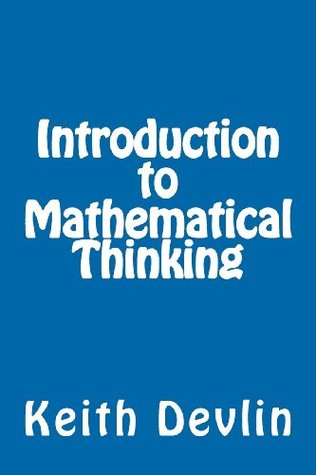More on this book
Kindle Notes & Highlights
The dramatic growth in mathematics led in the 1980s to the emergence of a new definition of mathematics as the science of patterns.
mathematics makes the invisible visible.
The Banach–Tarski Paradox, for example, says you can, in principle, take a sphere and cut it up in such a way that you can reassemble it to form two identical spheres each the same size as the original one. Because the mathematics is correct, the Banach–Tarski result had to be accepted as a fact, even though it defies our imagination.
It became clear, then, that mathematics can lead to realms where the only understanding is through the mathematics itself.
A function, according to Dirichlet, is any rule that produces new numbers from old. The rule does not have to be specified by an algebraic formula. In fact, there’s no reason to restrict your attention to numbers. A function can be any rule that takes objects of one kind and produces new objects from them.
First, education is not solely about the acquisition of specific tools to use in a subsequent career. As one of the greatest creations of human civilization, mathematics should be taught alongside science, literature, history, and art in order to pass along the jewels of our culture from one generation to the next. We humans are far more than the jobs we do and the careers we pursue. Education is a preparation for life, and only part of that is the mastery of specific work skills.
The first category comprises people who, given a mathematical problem (i.e., a problem already formulated in mathematical terms), can find its mathematical solution. The second category comprises people who can take a new problem, say in manufacturing, identify and describe key features of the problem mathematically, and use that mathematical description to analyze the problem in a precise fashion.
mathematics is a very precise subject, where exactness of expression is required.
Every key statement of mathematics (the axioms, conjectures, hypotheses, and theorems) is a positive or negative version of one of four linguistic forms: (1) Object a has property P (2) Every object of type T has property P (3) There is an object of type T having property P (4) If STATEMENT A, then STATEMENT B
ϕ implies ψ
the use of the word necessary in (7) often causes confusion. Notice that to say that ψ is a necessary condition for ϕ does not mean that ψ on its own is enough to guarantee ϕ. Rather what it says is that ψ will have to hold before there can even be any question of ϕ holding. For that to be the case, ϕ must imply ψ. (This is another of those occasions where my strong advice would be to re-read this paragraph several times until you are sure you get the point—then read it at least one more time!)
¬[∀xA(x)] is equivalent to ∃x[¬A(x)]
Now for the abstract verification. We begin by assuming that ¬[∀xA(x)]. That is, we assume it is not the case that ∀xA(x) is true. Well, if it is not the case that all x satisfy A(x), what must happen is that at least one of the x must fail to satisfy A(x). In other words, for at least one x, ¬A(x) must be true. In symbols, this can be written ∃x[¬A(x)]. Hence ¬[∀xA(x)] implies ∃x[¬A(x)].
in the mid-eighteenth century, the great Swiss mathematician Leonard Euler stated his belief that every even number beyond 2 can be expressed as a sum of two primes.
This property of even numbers had been suggested to him by Christian Goldbach, and became known as the Goldbach Conjecture.
“proof by contradiction.”


